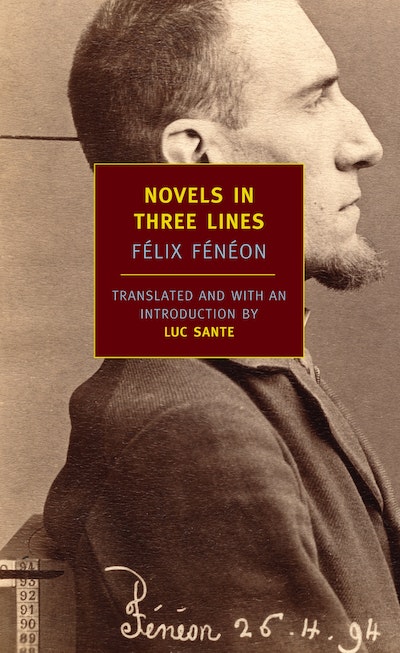[]
- Published: 15 October 2007
- ISBN: 9781590172308
- Imprint: NY Review Books
- Format: Paperback
- Pages: 208
- RRP: $32.99
Novels in Three Lines
Formats & editions
Buy from…
- Published: 15 October 2007
- ISBN: 9781590172308
- Imprint: NY Review Books
- Format: Paperback
- Pages: 208
- RRP: $32.99
"Félix Fénéon was one of the most influential critics of art and literature in fin-de-siecle Paris... He was, clearly, a man to whom history-cultural history-owes some recognition." -New York Times Book Review "[T]he 'Nouvelles'...were simply news items concerning accidents, quarrels, mayhem, fires and murders, reduced to minimal length and rendered tragic-comic or ludicrous by artful diction, euphemism, understatement and other devices. They have stylistic interest, contain political and social overtones, and convey a concept of the absurdity of life." -French Review "Fénéon is best known today for the art criticism that helped establish; for his Nouvelles in trois lignes, the pithy and often startlingly phrased newspapers accounts of current events that have been cited as predecessors of 'minimal' story writing"-American Historical Review "The fastidious editor Félix Fénéon, who placed an incisive style in the service of avant-garde interests on every front, married rhetoric and action, art and politics. Closely associated with Symbolism, and with the Neo-Impressionism whose theoretical and formal basis he defined, Fénéon was probably the most important art critic of the late nineteenth century." -The New Republic "Fénéon is best remembered for his devastatingly spare News stories...for Le Matin"-Burlington Magazine*



